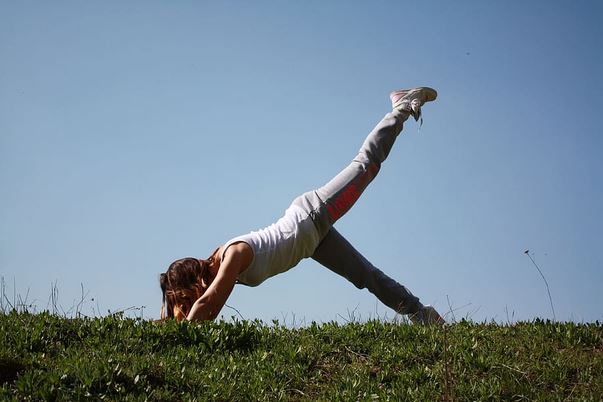Learning

Principles of Pilates
If you have experienced true Pilates, the many principles behind the practice of Pilates have helped you to achieve the most from your sessions. Pilates is amazing and because of these principles that work together in each exercise – breathing, pelvic placement, rib cage placement, scapular movement and stabilization and head and cervical placement, you will see unbelievable results safely and effectively. As Joseph Pilates says, “In ten sessions you will feel the difference, and in thirty you’ll have a whole new body”. We will discuss each principle in detail so you can understand their importance and physically feel them.
The first principle we are going to discuss in this article is breathing. Breathing, not only oxygenates the muscles, but proper breathing reduces tension in the upper neck and shoulders. Pilates breathing is a posterior lateral breathing, meaning when inhaling you breathe deep into the back and sides of your rib cage. At the same time as you exhale you feel the engagement of your deep abdominal and pelvic floor muscles and maintain this engagement as you inhale.
To feel this, lay on your back with your knees bent, feet hip-distance apart. First, place your hands surrounding your rib cage, inhale through your nose and feel your rib cage expand to the side and into the floor. As you exhale through pursed lips, focus on your rib cage closing in and down. This will take several slow breaths to feel. In order to feel the deep engagement of your abdominals, place the heel of your hands on your hip bones, reaching your fingers to your lower abdomen. The transverses abdominis muscle wraps horizontally around your lower abdomen. As you exhale, you should feel this muscle engage. If you don’t feel it, try to cough and this will help you find it. This muscle will always be engaged and will help you stabilize your lower back and pelvis, which will introduce our next principle, pelvic placement.
There are two positions for your pelvis in Pilates, neutral and imprint. ‘Neutral’ is the optimal placement for the pelvis and is where we are striving to be. Still laying on your back with your knees bent and feet hip-distance apart and hands still on your lower abdomen, neutral position is with your hip bones and pubic bone in the same plane and parallel to the floor. This is a more natural position for your pelvis and spine. Lack of strength and postural issues can make this a difficult position to start in, but over time you can move to a more neutral pelvis position. ‘Imprint’ is the pelvic position many of us need to start in. Laying in the same position, with neutral pelvis, slightly tilt your pelvis back to feel the imprint position. Your hip bones will be slightly lower than your pubic bone. Try this several times, inhaling as you tilt back to imprint and exhaling as you feel your pelvis return to neutral.
We started the discussion of rib cage placement during breathing. You want the rib cage to stay soft and move with the breath, but not open or expand to the front when inhaling and reaching your arms overhead. Feel that your rib cage stays connected to your abdominal muscle. Again, feel your rib cage expand to the sides and back as you inhale, and feel it close in and down softly as you exhale. Laying in the same position, reach your arms to the ceiling as you inhale. Exhale and extend your arms overhead as far you can without losing the connection between your rib cage and abdominal muscle, while keeping your shoulders away from your ears and stabilizing your scapulae. Your shoulders blades are going to move through each exercise, but you also want to feel them stabilize to help keep the tension out of your shoulders. As you begin each exercise, feel your shoulder blades pull down and in like a ‘v’ on your back. This will help keep your shoulders down throughout the exercise and engage the muscles surrounding your scapula.
Lay in the same position on the floor, with your arms by your side. Inhale and feel your shoulders move toward your ears and your shoulder blades slide up your back. Exhale and feel that ‘v’ motion as your shoulder blades pull down and in as your shoulders pull away from your ears. This demonstrates the principle of scapular movement and stabilization.
Finally, you want to be aware of your head and cervical placement during the movements. The head should be a natural extension of the neck and upper body. It is common to want to overextend or flex the head and neck. Always feel that your head is reaching away from your neck and shoulders. Keep your chin toward your chest, but with space between the two when flexing the upper body.
If you are taking Pilates, you have experienced the principles in some way. It never hurts to review them if you are unsure. Ask your instructor about each of them if you want a refresher course. You will only reach a bigger potential and receive even greater benefits from your Pilates practice.




